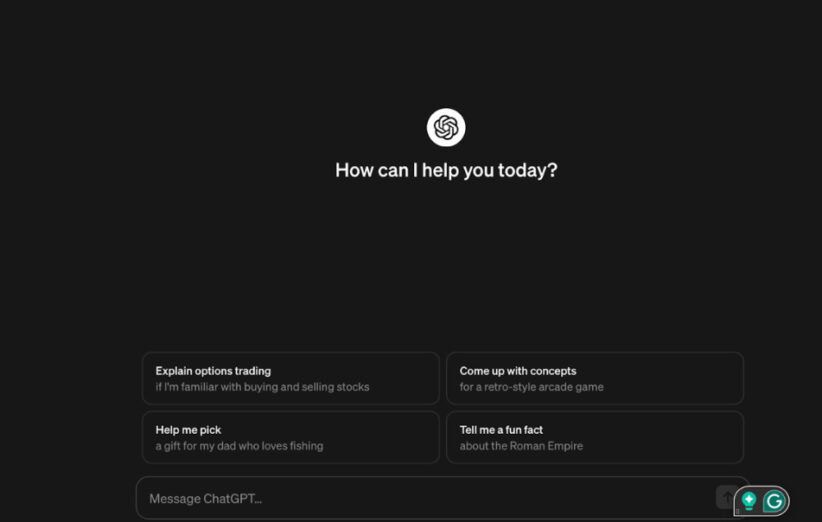By Tiasia Saunders
Artificial intelligence is still developing, and some experts believe the technology can assist with risk management in financial institutions by spotting errors and preventing bank crashes.
For example, the types of missteps that took down Silicon Valley Bank (SVB), the biggest U.S. bank failure since 2008.
According to a 2020 McKinsey & Company report on the usage of AI within the financial sector, financial institutions have used AI-powered tools in recent years for automated customer service interactions, fraud detection, and security protection.
“While for many financial service firms, the use of AI is episodic and focused on specific use cases, an increasing number of banking leaders are taking a comprehensive approach to deploy advanced AI and embedding it across the full lifecycle from the front- to the back-office,” the report stated.
Initially, AI was created to avoid human error and improve the accuracy and speed of mathematical calculations. Through the decades, it has evolved to tackle a greater range of tasks and take new forms, such as a recent example, ChatGPT.
“When we think about AI, we have to think about three different types of AI. One type of AI would be autonomous, and with this, the AI comes up with a decision and executes the decision– so think of a self-driving car,” Greg Dawson, an assistant professor of information systems at Arizona State University, said.
“Semi-autonomous is when the human says what needs to be done, [and] the AI implements” it. An example of that would be a weapons system,” Dawson added.
“Lastly, you have augmented AI when something else generates a whole bunch of information and provides it to the human to make a decision. The biggest thing that we are concerned with is something called algorithmic bias,” he continued.
With these advancements, there has been a global conversation about the potential advantages of using AI in different types of companies to reduce errors and improve decision-making.
“I believe the greatest benefit of AI in the financial industry ecosystem has been its ability to provide analytics and key insights during projects and cases for financial institutions,” said Bryce Anderson, an honors freshman business major from Jersey City, N.J.
“For example, investment banking analysts can utilize AI as a tool when it comes to predicting key investment decisions on stocks and bonds for higher-earning clientele and, in addition, transform sectors of business they enlist,” he continued.
Startups, such as Napier, Quantifind, and Symphony AI, are working to assist financial institutions in managing risks with this new technology. These companies work to validate their training models to ensure no decision bias occurs within the database.
“One of the real benefits that we’ve seen from a net reveal perspective is access to that new cutting edge AI capability both from detecting new crime. You’re actually able to write a rule to detect it, so you see these anomalies happening within the data,” said Peter Fisher, the product director at Symphony AI, a generative AI-based company.
“Different types of behavior and outliers that you wouldn’t have been able to see before. So, we can detect more criminal activity,” he continued.
Through several factors, such as comprehensive data analysis, compliance monitoring, and improved loan application review, AI has the capabilities to strengthen the financial sector.
“AI can identify crashes or downward trends that had similar characteristics in previous moments, allowing for repeated downfalls to be prevented. Knowing this we still need for people to understand that future problems aren’t as easily predicted or forecasted as accurately as AI has shown to be,” Anderson said.
Despite the influx of AI startup companies, regulators remain cautious about integrating AI technologies with financial systems. Their concerns include AI-based bias/discrimination and regulatory compliance issues.
Daron Acemoglu, a professor in the Department of Economics at Massachusetts Institute of Technology, still needs to be convinced about AI integration within financial institutions.
“In general, there is a tendency to see AI as a solution to all problems, and I’m quite skeptical. Many of the most important problems we have right now, such as climate change or political polarization, are caused by institutional weaknesses and faulty incentives; purely technical systems cannot fix them,” Acemoglu said.
Although AI can offer companies advantages, there is speculation about the rapid growth of AI’s capabilities. Many experts agree that humans must manage the technology appropriately, regardless of how it is used.
“I think it all comes down to the two factors of transparency and explainability,” said Dawson. “We are hugely concerned with the problem of algorithmic bias if we can explain how the AI algorithm works and if we’re transparent with the type of data.”
AI technologies are still being created and adapted, and their effect on the banking industry remains to be seen. As of now, the primary focus is on governance and transparency
In discussing the power of AI, Symphony AI’s product director Fisher said, “An application that had been trained on data from hundreds of thousands of banks over decades, who would have been very quick to spot the issue that SVB had.”















